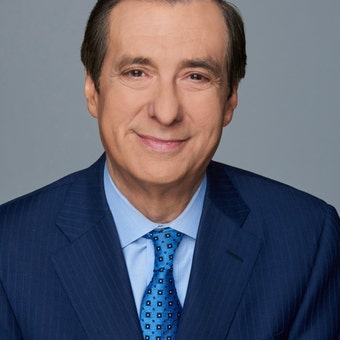Gowdy on Chauvin trial: I thought this was murder from the first time I saw the video
Trey Gowdy reacts to Derek Chauvin pleading the Fifth Amendment ahead of the trial’s closing arguments.
The police in Minnesota seem to be doing their best to tarnish their sinking reputation even further.
With the trial of Derek Chauvin in the jury's hands, America has had to relive the horrifying 9 minutes and 29 seconds of his knee on George Floyd’s neck and a parade of witnesses describing what happened as unmitigated murder.
Then, last week, an officer in a Minneapolis suburb shot and killed Daunte Wright when he initially refused to cooperate during a traffic stop, saying she mistook her gun for a Taser.
You might expect the state and local police would be trying to persuade the world that these were isolated incidents and that the vast majority of their officers are compassionate and fair-minded people.
Instead, some of their number started arresting and roughing up journalists—to the point where a judge had to intervene.
RIOTS, PROTESTS IN MINNESOTA, CHICAGO, ELSEWHERE IN REACTION TO POLICE SHOOTINGS
Now I know reporters aren’t too popular these days. But some of them take risks to cover the news.
And I know minor clashes between cops and people with press badges are hardly uncommon during tense and sometimes violent demonstrations. But what’s striking about the Minnesota incidents is how utterly unnecessary they are.
It’s almost like certain officers are taking out their frustrations on journalists who are just trying to do their job by covering the nightly demonstrations that erupted after 20-year-old Wright was killed. At least 100 people were arrested at a Friday night protest.
"Apologies are not enough; it just cannot happen," said Minnesota’s Democratic governor, Tim Walz. He told a CBS station that the assault on media over the last few years has been "chilling." So why doesn’t he do something about it? He sounds like a bystander.
Minneapolis freelance photographer Tim Evans said on social media that police sprayed him in the face with pepper spray, tackled to the ground, and even after showing his press badge, an officer "punched me in the face, tore off my badge, and threw it in the dirt."
Minneapolis freelance photographer Tim Evans said on social media that police sprayed him in the face with pepper spray, tackled to the ground, and even after showing his press badge, an officer "punched me in the face, tore off my badge, and threw it in the dirt."
Joshua Rashaad McFadden, a freelance photographer for the New York Times, told his paper that police surrounded his car as he tried to leave the protests. He says they beat on the windows with batons, entered the car to force him out, beat his legs and struck his camera lens.
"It was definitely scary," the black 30-year-old said, adding that officers did not believe his press credentials were real until another photographer vouched for him.
"It’s extremely frustrating," he said, to know that "if a situation like this happens, they’re not going to believe or care about anything I’m saying."
A CNN producer, Carolyn Sung, was grabbed by her backpack and thrown to the ground by state troopers while attempting to comply with a dispersal order. According to a letter from a lawyer on behalf of 20 media organizations, Sung did not resist, showed her credentials—and yet was arrested.
This is inexplicable, and it gets worse. When Sung, who is Asian American, said the zip ties on her wrists were too tight, one trooper yelled at her, "Do you speak English?"
The producer was taken to the Hennepin County Jail and, according to the letter, "was patted down and searched by a female officer who put her hands down Sung’s pants and in her bra, fingerprinted, electronically body-scanned, and ordered to strip and put on an orange uniform." By the time lawyers were tracked down and secured her release, she had been in custody for more than two hours.
This was not just a matter of animosity toward out-of-state journalists. A major Minneapolis station, WCCO, was affected as well.
"WCCO’s Reg Chapman reported that during the height of the chaos – which came after hours of peaceful protesting – law enforcement told him, along with other WCCO photojournalists to get on the ground. They took pictures of the journalists and checked their credentials before allowing them to continue on."
Jasper Colt, a photojournalist for the USA Today Network, said some media people like him were slow to leave the area because they didn’t see any reason why they couldn’t continue to cover the Brookly Center protests.
"Colt described police then corralling protesters and media into one group and yelling for them to get ‘flat on our stomachs.’"
SUBSCRIBE TO HOWIE'S MEDIA BUZZMETER PODCAST, A RIFF OF THE DAY'S HOTTEST STORIES
On Friday, a federal judge issued a temporary restraining order barring law enforcement officers from arresting or using physical force against journalists covering the protests.
The journalists argued in court that they were "directed by law enforcement to vacate the protest area, physically grabbed, struck by less-lethal projectiles and rubber bullets, and pepper sprayed."
Judge Wilhelmina Wright rejected the argument that police were trying to keep the journalists safe, "particularly when considering the allegations, supported by declarations, that members of the press have sustained severe injuries at the hands of law enforcement in recent days. These severe injuries include bruising and at least one injury requiring surgery."
These are authoritarian tactics, and local politicians and officers can no longer attempt to blame such misconduct on Donald Trump. It is another blow to the tarnished reputation of Minnesota and its largest metropolitan area. We can only hope the George Floyd verdict doesn’t lead to more protests and more violence, with journalists caught in the middle.


